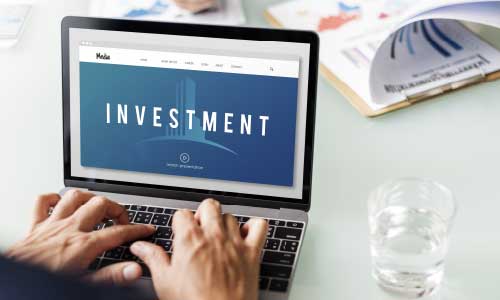800 800 001
How Much Will Education Cost in Dubai in 2025
Parents across Dubai are already receiving re-enrolment notices for the 2025–26 academic year. With the Knowledge and Human Development Authority (KHDA) approving a 2.35% Education Cost Index (ECI), many private schools are expected to raise the cost of education in UAE.
But there’s some relief: With KHDA’s school fee fact sheets, you can understand school charges better and plan ahead.
In this guide, we cover:
- KHDA’s role in fee regulation
- School fee increases in Dubai 2025
- Additional education-related costs
- KHDA’s affordability strategy
- Best education savings plans in UAE
Best Investment Plans in UAE
Some of the best Investment quotes in UAE & Dubai are:
What is KHDA and Why Should You Care?
The KHDA is the government body overseeing private education in Dubai, ensuring quality and accessibility. It regulates school inspections, fee increases, and educational standards. In a move to promote transparency around private school fees increase in
Dubai 2025, KHDA has rolled out updated School Fee Fact Sheets for every private school in Dubai. These sheets are now publicly available and clearly show what each school is charging for the upcoming academic year.
What’s in the KHDA School Fee Fact Sheets?
Each school’s fact sheet gives you a clear breakdown of —
- Tuition Fees — The core academic cost
- Additional Charges — Uniforms, books, transport, activities, and more
- Discounts — Sibling discounts, early-payment incentives, and scholarships
- Historical Fee Trends — How much fees have changed over the past few years?
Why Does it Matter?
Previously, this info was scattered across school websites, often in different formats and with hidden charges. Now, you get a standardised, KHDA-approved view of total education cost in Dubai, school by school.
School Fee Increase in Dubai 2025: Who Can Raise Fees and by How Much?
KHDA allows private schools in Dubai to apply for a tuition fee increase based on their inspection rating and the ECI, which is set at 2.35% for 2025–26.
Here’s how the school fees increase in Dubai 2025 —
|
School Type & Performance |
Allowed Increase |
|---|---|
|
Maintained the same rating |
ECI (2.35%) |
|
Improved from Acceptable → Good |
ECI × 2 = 4.7% |
|
Improved from Good → Very Good |
ECI × 1.75 = 4.11% |
|
Improved from Very Good → Outstanding |
ECI × 1.5 = 3.52% |
|
Dropped in rating |
No fee increase allowed |
|
First-time inspected schools |
Only ECI allowed |
|
Not-for-profit schools |
May exceed ECI with board approval + parent endorsement |
Note: These rules apply only to schools operating for more than 3 years.
Additional Factors Increasing the Cost of Education in UAE
Education costs don’t just include the school fees. When it comes to schools, you can find various additional costs. Here’s how —
- Tuition Fees: This includes the main cost of attending school for the year
- Extracurriculars & Trips: Extra charges for the sport activities, dance competitions, or trips
- Fee Increase: A look at how fees have changed in the past and any unexpected increase
- Discounts & Scholarships: Financial relief through sibling discounts, early payment incentives, merit-based scholarships, and corporate tie-ups or special aid for long-term enrollees
- Additional Fees: Any extra charges for books, uniform, transportation expenses, and other services
What is KHDA’s Education 33 Strategy?
KHDA’s long-term Education 33 (E33) strategy is all about inclusive, equitable learning, and that includes tackling affordability.
Key E33 Goals That Impact Parents
1. 49,000 new affordable school seats by 2033
2. 90%+ parental satisfaction with school options
3. 100% graduation for Students of Determination
4. Focus on wellbeing, accessibility, and choice across all fee levels
This means more budget-friendly, quality schools are expected to launch over the next decade, offering more choices for middle-income families. However, the persistent question remains.
Why is the Cost of Education in UAE So High?
Despite the fact sheets and fee caps, Dubai remains one of the most expensive cities for private education in the world. Some high-end international schools now charge over AED 100,000 annually, while new ‘ultra-premium’ schools’ fees are expected to exceed AED 200,000/year. At the same time, many mid-income families find it hard to strike a balance between quality and affordability.
- Operating costs: Newer campuses pay premium, real-estate rents, and invest in premium facilities & expats
- Teacher recruitment: Internationally experienced staff command higher salaries
- Lack of Mid-Range Schools: The supply of top-tier schools has outpaced mid-tier options
- Hidden Charges: Transport, books, and uniforms can add 10–20% to base fees
- Rising Living Costs: Rent, fuel, and utilities are also climbing
Tips for Smart Saving for Child Education in UAE
While education costs are on the rise, you can always find various options to be financially prepared and give the best education to your children.
Start Early, Automate
To give you an example, a monthly AED 1,500 SIP earning 6 % could grow to ~AED 432,000 in 15 years — nearly covering overseas undergraduate fees.
Use Education-Specific Plans
Many banks and insurers offer education saving plans in the UAE with goal dates aligned to university age, premium waiver on parent’s death or disability, and multi-currency options.
Leverage End-of-Service Benefits
Allocate a portion of gratuity into your child’s fund rather than lifestyle upgrades.
Diversify Currency Exposure
Tuition abroad is often in USD/GBP, so choose USD-denominated funds or hedged ETFs.
Review Annually
Re-cost your goal each year using KHDA’s published fee guides plus assumed university inflation (5-7 %).
Scholarships & Early-Payment Discounts
Many Dubai schools give 2-4 % discounts if the full year is paid upfront or siblings are enrolled.
Best Investment for Child Education in UAE
To combat the rising education cost in Dubai 2025 and other emirates, many UAE parents turn to structured child education plans. These plans not only help build a financial corpus but also ensure that your child’s education continues uninterrupted, even in the event of unforeseen circumstances.
✅ Single Premium Child Education Plan
- How it works: You invest a lump sum amount at the start of the policy
- Who it’s for: Parents with surplus funds who want a one-time investment with minimal future effort
- Key benefit
- No need to worry about regular contributions or premium defaults
- Generates wealth over the policy tenure to cover future education expenses
✅ Regular Premium Child Education Plan
- How it works: You contribute monthly, quarterly, half-yearly, or annually over a set term
- Who it’s for: Salaried professionals or self-employed individuals who prefer systematic investing
- Key benefit: Encourages disciplined saving while building a sizable fund for your child’s future education
✅ Unit-Linked Insurance Plans (ULIPs) for Education
- How it works: A portion of your premium goes toward life insurance, while the rest is invested in equity or debt market-linked funds
- Who it’s for: Parents seeking market-linked returns and a life cover
- Key benefits
- Potential for higher returns over the long term
- If the parent/legal guardian passes away during the policy term, the insurer waives future premiums while still paying the maturity amount to the child
- Tax benefits (subject to terms and conditions)
✅ Endowment Plans
- How it works: A traditional life insurance policy with a savings component — you pay regular premiums and receive a lump sum at maturity
- Who it’s for: Conservative investors looking for capital safety and guaranteed payouts
- Key benefits
- Life cover + savings
- Maturity proceeds can fund university expenses, exam fees, or overseas admissions
Checklist for Choosing an Education Savings Plan in UAE
Here’s what you need to check before opting for the best investment for child education in UAE —
- Goal Amount & Timing – Estimate year-by-year fees (FS through Year 13 + university)
- Premium Waiver – Check the availability of this option and get it (if available) — this ensures the fund continues if the payer cannot pay premiums due to covered events
- Currency Flexibility – Look for plans that are available in major currencies like AED, USD, GBP, and more
- Charges & Surrender Penalties – Ask for total expense ratio and break-even year
- Historical Fund Performance – Look at 5-year and 10-year net returns vs benchmark
- Provider Credibility – Check insurer solvency, policyholder protection schemes, local service, and more to get an idea of the provider’s reliability
Key Dates & Re-Enrolment Payments:
|
Task |
Typical Deadline* |
Cost |
|---|---|---|
|
Re-enrol via parent portal |
Late April 2025 |
5 % of tuition (AED 500–4,000) |
|
Deposit offset |
Credited to Term 1 invoice |
— |
|
Refund? |
Only for relocation or other KHDA-approved cases |
— |
* Deadlines and other details vary — check your school circular
Final Word
With Dubai school fees rising steadily — by up to 4.7% for some schools — the cost of education is fast becoming one of the largest household expenses. Whether your child is just starting primary school or nearing university, now is the best time to set up a tailored education plan.
You can choose from a variety of child education plans in the UAE — single premium, regular premium, ULIPs, or endowment — based on your income stability, risk appetite, and financial goals.
The earlier you start, the more power you give compounding — the easier it becomes to give your child the gift of a stress-free academic future.
Frequently Asked Questions
Does KHDA allow all schools a 2.35 % increase automatically?
Only schools that have operated for 3+ years and meet financial/quality criteria may apply. KHDA vets each submission.
How much is the re-enrolment fee and why do I have to pay this?
Most Dubai schools charge a non-refundable re-enrolment fee of 5% of the annual tuition (up to AED 4,000 at top-rated schools). This amount is later adjusted against Term 1 fees, so it’s not an extra cost.
What is the deadline for re-enrolment?
You’ll usually need to confirm re-enrolment and pay the fee by April 2025. As per KHDA, schools starting in September can collect fees only after April 7, while those starting in April can collect after January 6, 2026.
How early should I start saving?
Ideally, you should start saving right from the birth of your child. Even AED 1,000 per month at 5 % grows to around AED 346,000 by the age of 18.
Are education plans tax-efficient?
UAE is tax-free on investment gains for residents. However, overseas tax may apply if you return home.
More From Investment
- Recent Articles
- Popular Articles






















